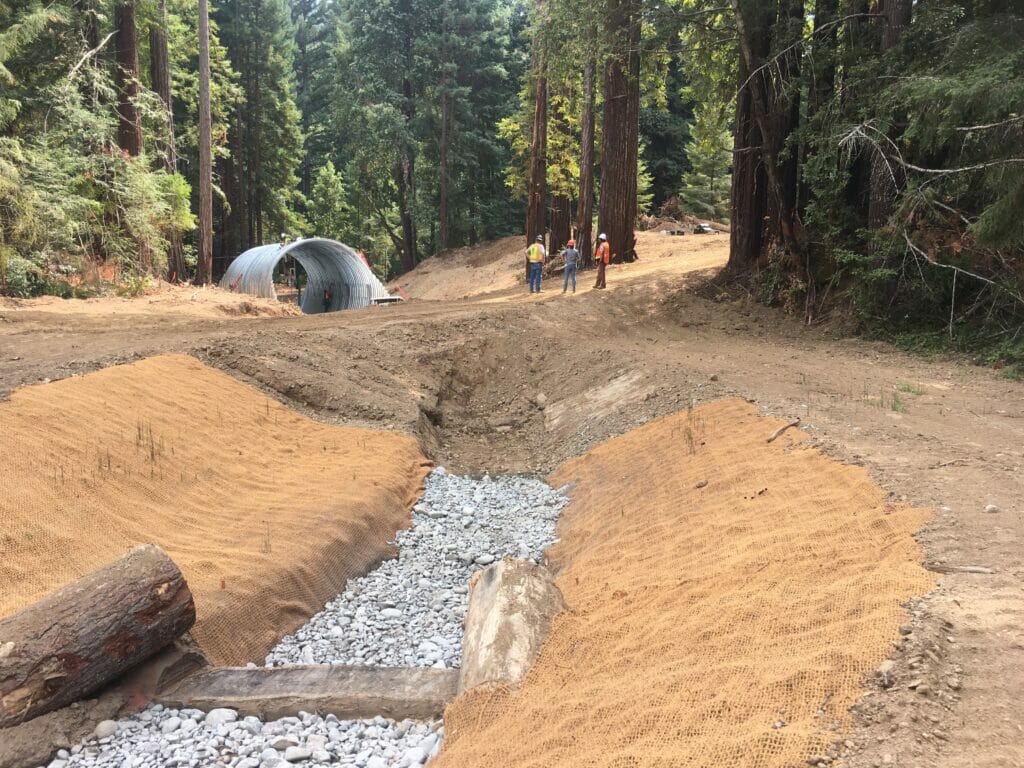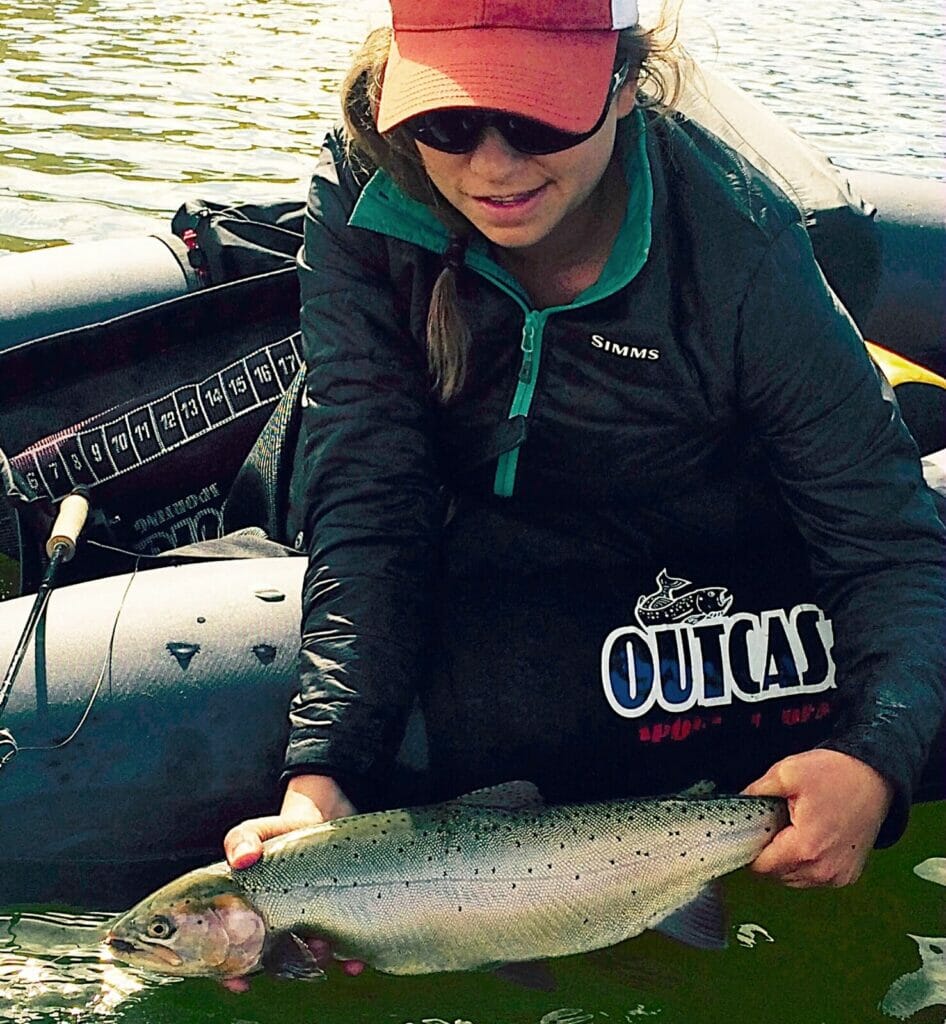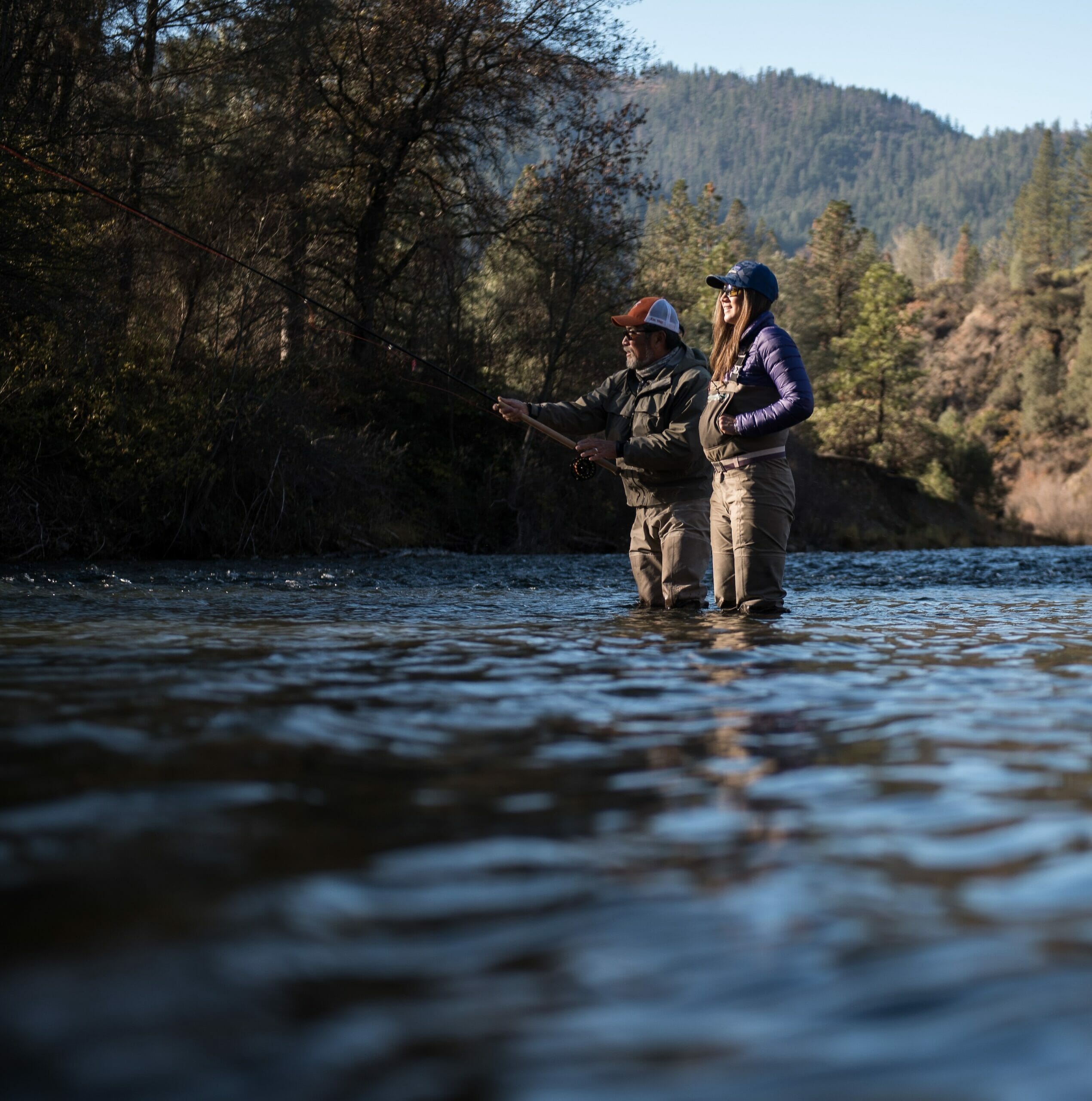It would be a serious understatement to say that 2020 has been a challenging year.
Yet in the midst of a global pandemic and its harsh toll on our economy, communities and personal lives, Trout Unlimited and our supporters and partners helped deliver some outstanding conservation outcomes.
Our California Program helped achieve major milestones on the legislative and policy front. Most notably, in July the Federal Energy Regulatory Commission conditionally approved the application from the Klamath River Renewal Corporation for transfer of the operating license for four old dams on the Klamath River from the utility PacifiCorp to the KRRC for the purpose of decommissioning and removing them, and in November TU joined The Karuk and Yurok Tribes, the States of California and Oregon, PacifiCorp and the KRRC in signing a new Memorandum of Agreement which affirms these parties’ commitment to license transfer and dam removal and addresses cost overrun liability issues. We are confident the project will remain on track for dam removal to begin in 2022.
TU delivered the voice of conservation-minded sportsmen and women to passage of the Great American Outdoors Act, which provides permanent full funding for the Land and Water Conservation Act and five years of funding through the National Parks and Public Land Legacy Restoration Fund for repair and upgrade of roads, trails, campgrounds and other recreational infrastructure on our public lands. In addition, the House of Representatives passed three public lands conservation bills – the Northwest California Wilderness, Recreation and Working Forests Act, the Central Coast Heritage Act, and the San Gabriel Mountains Foothills and Rivers Protection Act — that would better protect and restore habitat, water quality and fishing opportunities in waters such as the South Fork Trinity River, Piru and Sespe creeks, and the east and west forks of the San Gabriel River as part of the Protecting America’s Wilderness Act. Sen. (now Vice President-elect) Kamala Harris also introduced a version of this bill, the PUBLIC Lands Act, in the Senate.

At the state level, TU’s California Science team led efforts to restore Central Valley floodplains and native salmon populations and to improve water system management to provide better flows when fish need it most. TU California staff and grassroots also had a hand in shaping new angling regulations for inland (non-anadromous) rivers and streams. Our advocacy emphasized conservation of wild trout fisheries and helped amend the general, statewide regulation to better conserve coldwater gamefish populations – starting in 2021, all stream fishing during the winter season will be artificials-only and zero harvest. Also, TU supported a bill that would have committed California to the so-called “30 by 30” goals: to conserve 30 percent of lands and waters by the year 2030 while sustaining fishing and hunting opportunities. Although this bill did not pass, Gov. Newsom issued an Executive Order directing state resource agencies to integrate 30 by 30 goals into their planning and operations – a move strongly endorsed by TU.
Our North Coast Coho Project — now the largest salmonid restoration program in the state — initiated or completed a variety of projects in coastal streams between the Navarro and Eel Rivers, including a suite of projects with the historic Skunk Train railway and other partners on the upper Noyo River that will dramatically improve access for endangered coho salmon to access prime spawning and rearing habitat in one of the most important North Coast watersheds for native coho and steelhead.
TU’s California Water Program delivered the goods in 2020, too. On San Clemente Creek, an important spawning and rearing tributary for steelhead in the Carmel River watershed, we completed construction of a new project that dramatically improves fish passage by replacing a concrete ford with a bridge. And on Deer Creek, a key salmon spawning and rearing tributary to the Sacramento River, TU worked with the Deer Creek Irrigation District (DCID) to eliminate a 100-year old migration barrier for spring-run Chinook and steelhead by improving fish passage at the District’s diversion dam — this project involved constructing a roughened rock ramp, re-profiling a portion of the diversion ditch to eliminate the need for seasonal flashboards, and installing a new fish screen. TU is currently partnering with the Stanford-Vina Ranch Irrigation Company (SVRIC), the most downstream diverter on Deer Creek, to design a project that restores full passage for all life stages of chinook and steelhead at SVRIC’s diversion dam.

Our Truckee River office, largely focused on public lands conservation and meadow restoration, completed or implemented a number of projects aimed at improving protections for water quality, headwaters, native and wild trout populations, retention of water on the landscape, and enhancing instream habitat in two of the finest trout streams in California. We completed two habitat improvement projects on the Truckee River, one led by TU’s Truckee River Chapter, the other in partnership with the Union Pacific Railroad and the Tahoe Mountain Resorts Foundation. Our multi-year effort to stabilize streambanks and enhance streamflows and instream and riparian habitat conditions in Squaw Creek continued. We also worked on a variety of meadow restoration projects from the Golden Trout Wilderness in the southern Sierra to the Pit River watershed; this summer, we launched construction efforts on such projects in the Golden Trout Wilderness and the Sequoia National Forest backcountry (and got chased out by wildfires — our efforts will resume next year), and began design and prep work for a project with the Sagebrush TU Chapter, Patagonia and the Nevada Division of Wildlife that will improve habitat in the East Walker River.
On the science front, our California program delivered data and analysis to the difficult dynamic of state water issues, consistent with TU’s collaborative, common interest-based decision-making about resource management. Natalie Stauffer-Olsen, PhD, our California staff scientist, led a group of fellow women scientists from three universities on a project linking Yuba River salmon parentage genetics and otolith (ear-bone) analysis aimed at better understanding their life histories. Our California science crew also partnered with water and agriculture interests to develop a map of landscape scale floodplain restoration opportunities across the Sacramento River Valley. And, working with River Partners and CalTrout, our Science staff initiated a collaborative effort with the California Department of Fish and Wildlife and local landowners to develop a design for floodplain restoration in the Sutter Bypass — the best and biggest opportunity to recover native Chinook salmon rearing habitat in the northern Central Valley.
In a tough year defined by wildfire and disease, TU’s work in California continued to conserve, protect and restore vital salmon and trout watersheds, to engage diverse partners in our projects, and to benefit local communities. We at TU’s California Program wish all of our members, supporters and partners good health and wellbeing for you and your families, your communities, and your local streams. Thank you for all you do to keep California’s rivers and creeks clean, cold and fishable.



